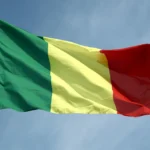
Nestled in the heart of Central America, Costa Rica beckons with its enchanting landscapes, rich cultural heritage, and a commitment to environmental stewardship. From the vibrant celebrations of Independence Day to the lush biodiversity of its national parks, Costa Rica is a tapestry of history, nature, and resilience. This tropical haven, known for its “Pura Vida” lifestyle, encompasses not only breathtaking volcanoes and pristine beaches but also a society dedicated to education, sustainability, and the pursuit of happiness. Join us as we delve into 25 fascinating historical facts and numerical trivia that unveil the unique charm and significance of Costa Rica.
Independence Day: Costa Rica’s Independence Day is celebrated on September 15, marking the country’s liberation from Spanish colonial rule in 1821. Following the adoption of the Act of Independence in Guatemala, Costa Rica became part of the short-lived Mexican Empire before joining the United Provinces of Central America. The nation’s commitment to a path of sovereignty and self-governance is remembered and celebrated through vibrant parades, traditional music, and cultural events held nationwide on this important day.
Land Area: Costa Rica encompasses approximately 51,100 square kilometers, ranking as the 129th largest country globally. Its diverse topography includes lush rainforests, volcanic landscapes, and pristine beaches. Despite its relatively modest size, Costa Rica’s rich biodiversity and varied ecosystems contribute to its global significance in environmental conservation.
Population: As of my last knowledge update in January 2022, Costa Rica is home to an estimated 5.1 million people. The country’s population is characterized by cultural diversity, with influences from indigenous communities, European settlers, and African descendants. Urban centers like San Jose are hubs of activity, while rural areas maintain a close connection to traditional Costa Rican ways of life.
Capital City Elevation: San Jose, the capital and largest city of Costa Rica, is situated at a noteworthy elevation of 1,161 meters (3,809 feet) above sea level. This elevated location contributes to the city’s pleasant climate, characterized by cooler temperatures compared to coastal areas.
Biodiversity: Despite its small size, Costa Rica boasts incredible biodiversity, hosting approximately 500,000 species, including a vast array of flora and fauna. The country’s commitment to conservation is reflected in its numerous national parks and protected areas, making it a haven for ecotourism and research in tropical biology.
National Parks: Costa Rica takes pride in its commitment to environmental preservation, with over 30 national parks covering about 25% of the nation’s total land area. These parks showcase the country’s stunning natural beauty, including tropical rainforests, cloud forests, and unique wildlife habitats.
Army Absence: In a bold move for peace, Costa Rica abolished its army in 1948, following the civil war. The decision was enshrined in the country’s constitution, making Costa Rica one of the few nations globally without a standing military force. Instead, the country allocates resources to education, healthcare, and environmental conservation.
Longevity: Costa Rica stands out globally for its high life expectancy, with an average of around 80 years. This longevity is often attributed to the country’s emphasis on a healthy lifestyle, access to quality healthcare, and a strong sense of community.
Coffee Production: Renowned for its high-quality Arabica coffee, Costa Rica has a rich history in coffee production. The annual export of around 1.5 million 60-kilogram bags contributes significantly to the country’s economy. The fertile volcanic soils and ideal climate of regions like the Central Valley create optimal conditions for cultivating some of the world’s finest coffee beans.
Blue Zones: The Nicoya Peninsula in Costa Rica is celebrated as one of the world’s “Blue Zones,” regions where people exhibit extraordinary longevity. Factors contributing to the health and longevity of Nicoya’s residents include a plant-based diet, strong social connections, and an active lifestyle. This unique distinction has garnered international attention and interest in understanding the lifestyle choices of these communities.
Currency: The official currency of Costa Rica is the Costa Rican colón. The exchange rate fluctuates, but as of my last update, it was around 620 colones to 1 US dollar. The colón is named after Christopher Columbus, known as Cristóbal Colón in Spanish. While the country has considered adopting the U.S. dollar, the colón remains an integral part of Costa Rican identity and economic transactions.
Guanacaste Day: Celebrated on July 25th, Guanacaste Day commemorates the annexation of the Guanacaste province from Nicaragua in 1824. Festivities include parades, traditional music, and cultural events, showcasing the pride and identity of the Guanacastecos. The annexation has become a symbol of Costa Rica’s commitment to territorial integrity and cultural diversity.
Literacy Rate: Costa Rica boasts a high literacy rate, typically above 97%. This achievement is a testament to the country’s emphasis on education and its commitment to providing accessible and quality learning opportunities. Education is compulsory and free for all Costa Rican children, contributing to the nation’s overall well-educated population.
Carbon Neutrality Goal: Costa Rica has set an ambitious goal to become carbon neutral by 2050, emphasizing its dedication to environmental sustainability. This commitment involves initiatives such as promoting renewable energy sources, reforestation projects, and sustainable development practices. Costa Rica’s efforts to combat climate change serve as a model for global environmental stewardship.
Volcanoes: Costa Rica is home to over 200 volcanic formations, with several classified as active. Arenal Volcano was one of the country’s most active until 2010 when it entered a resting phase. The volcanic landscape contributes to the nation’s geothermal energy production and offers breathtaking scenery, attracting tourists and researchers interested in the geological marvels of the region.
Ox Cart Tradition: The traditional ox cart, or “carreta,” painted with vibrant and intricate designs, is a cultural symbol of Costa Rica. In 2005, UNESCO declared the ox cart tradition a Masterpiece of the Oral and Intangible Heritage of Humanity. Historically used for transporting coffee beans, these carts are now crafted as pieces of art, representing the country’s agricultural heritage and artisanal craftsmanship.
Temperature Range: Costa Rica’s tropical climate varies across regions, but the Central Valley experiences temperatures ranging from 15°C to 30°C (59°F to 86°F). This moderate climate contributes to the region’s popularity as a residential area and is a key factor in the cultivation of various crops, including coffee.
Peninsula de Santa Elena: The Peninsula de Santa Elena is known for its ecological significance and is home to the Cabo Blanco Absolute Natural Reserve, established in 1963 as Costa Rica’s first national park. The reserve protects diverse ecosystems, including tropical dry forests and marine habitats, making it a haven for biodiversity and scientific research.
World Happiness Index: Costa Rica consistently ranks high on global happiness indices, reflecting the well-being and contentment of its citizens. Factors contributing to this happiness include the country’s commitment to environmental sustainability, strong social connections, and a culture that values life satisfaction over material wealth.
Internet Usage: Costa Rica has a high rate of internet penetration, with over 80% of the population having access to the internet. This widespread connectivity has facilitated advancements in education, business, and communication. The country continues to invest in expanding digital infrastructure to ensure broader access to information and technology.
Blue Flag Beaches: Costa Rica is proud to have been awarded the Blue Flag designation for many of its beaches, signifying high environmental standards. The Blue Flag program assesses water quality, environmental education, safety, and other criteria. This recognition highlights the country’s commitment to sustainable tourism and the preservation of its coastal ecosystems.
Education Spending: Costa Rica allocates a significant portion of its national budget to education, with around 7% of the GDP dedicated to this sector. This financial commitment reflects the country’s belief in the transformative power of education and its dedication to providing quality learning opportunities for all citizens.
Dengue Outbreaks: Due to its tropical climate, Costa Rica occasionally experiences dengue outbreaks, a mosquito-borne viral infection. The government implements measures to control the spread of the disease, including public awareness campaigns, mosquito control programs, and community engagement. These efforts underscore the country’s commitment to public health.
Renewable Energy: Costa Rica is a global leader in renewable energy, with a substantial portion of its electricity generated from sources like hydro, wind, and geothermal. The country’s commitment to clean energy has positioned it as a model for sustainable development. In 2017, Costa Rica achieved a major milestone by running on 100% renewable energy for several months.
La Carreta Tica: The “Carreta” holds a special place in Costa Rican culture and history. It is a symbol of the oxcarts historically used for transporting coffee beans from the Central Valley to the Pacific Coast. In 2006, San Jose hosted the largest oxcart parade, recognized by Guinness World Records. The event featured an impressive 2,495 oxcarts, showcasing the significance of this traditional craft and its role in the nation’s agricultural heritage.
People frequently ask:
Where is Costa Rica located?
Costa Rica is located in Central America, between Nicaragua to the north and Panama to the south.
Is Costa Rica in Asia or Europe?
No, Costa Rica is neither in Asia nor Europe. It is situated in Central America.
Is Costa Rica a US territory or not?
Costa Rica is not a US territory. It is an independent sovereign nation with its own government and culture.
What language do they speak in Costa Rica?
The official language of Costa Rica is Spanish. However, English is also spoken in some areas, particularly tourist destinations.
How do you say hello in Costa Rica?
To say hello in Costa Rica, you can use the following greetings:
“Hola” (pronounced oh-lah): This is the most common and formal way to say hello.
“Pura vida” (pronounced poo-rah vee-dah): This is a Costa Rican expression that means “pure life” and is used as a greeting, farewell, and general expression of positivity.
What is Costa Rica’s main religion?
The main religion in Costa Rica is Catholicism, practiced by around 70% of the population. Other religious groups also exist in the country, such as Protestants and Evangelicals.









